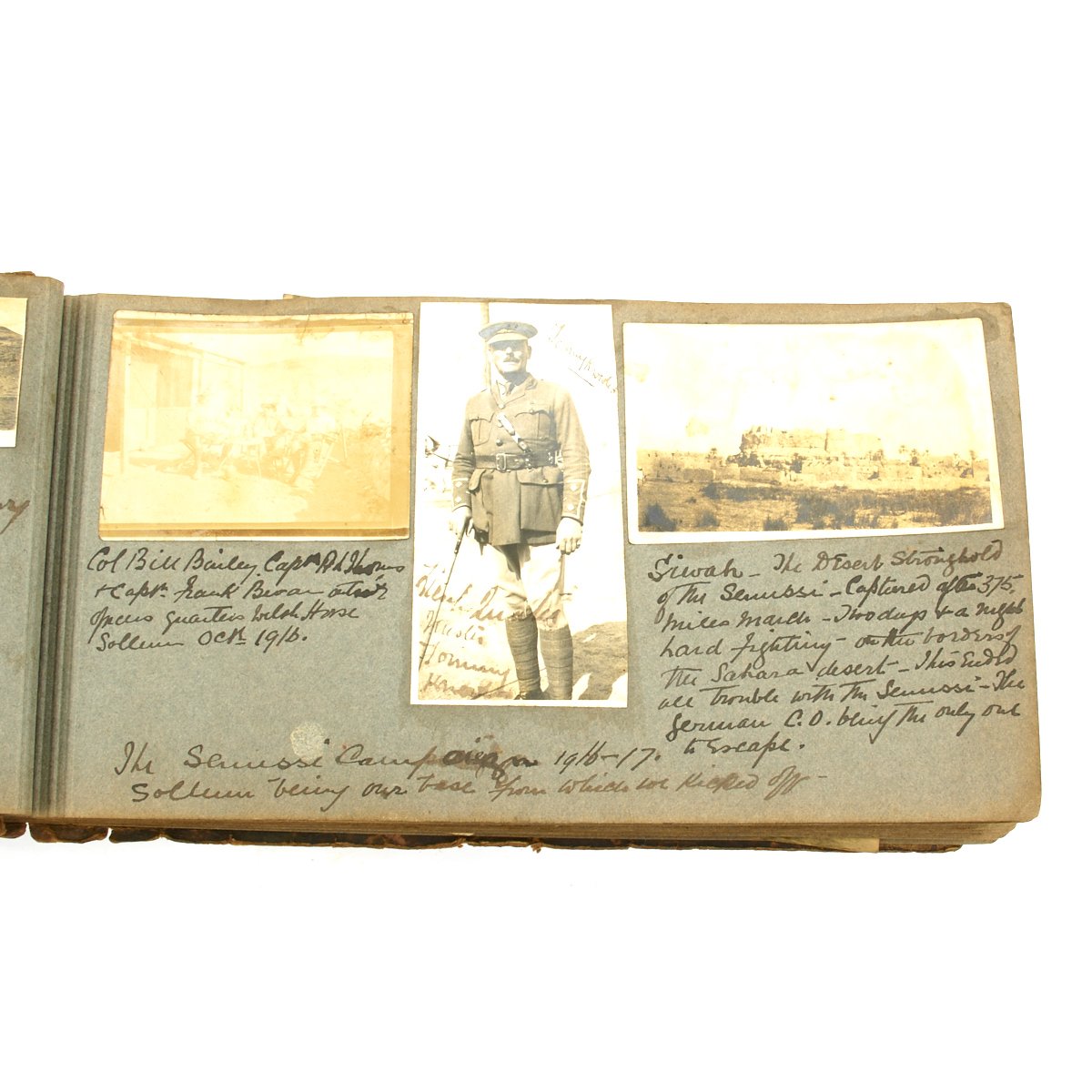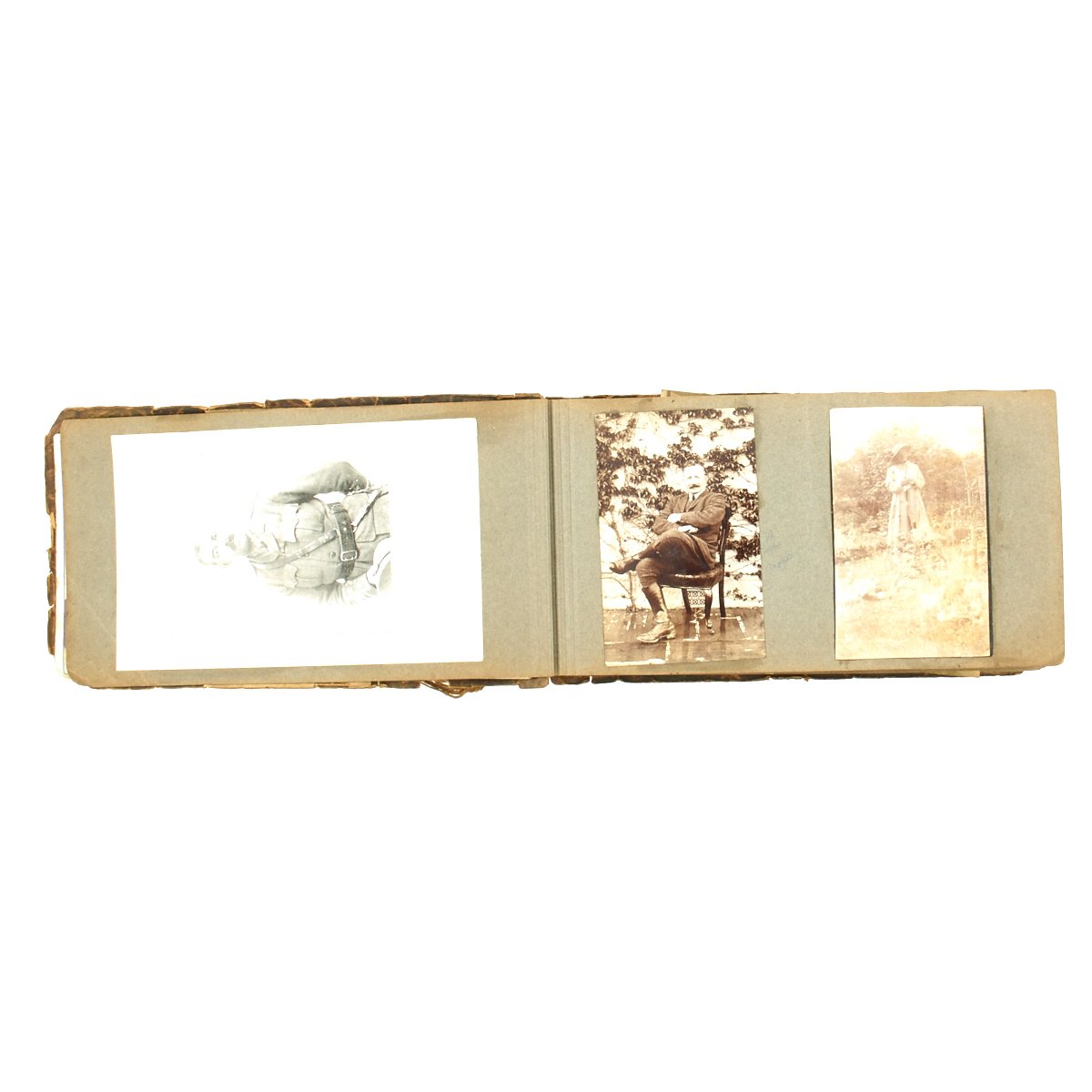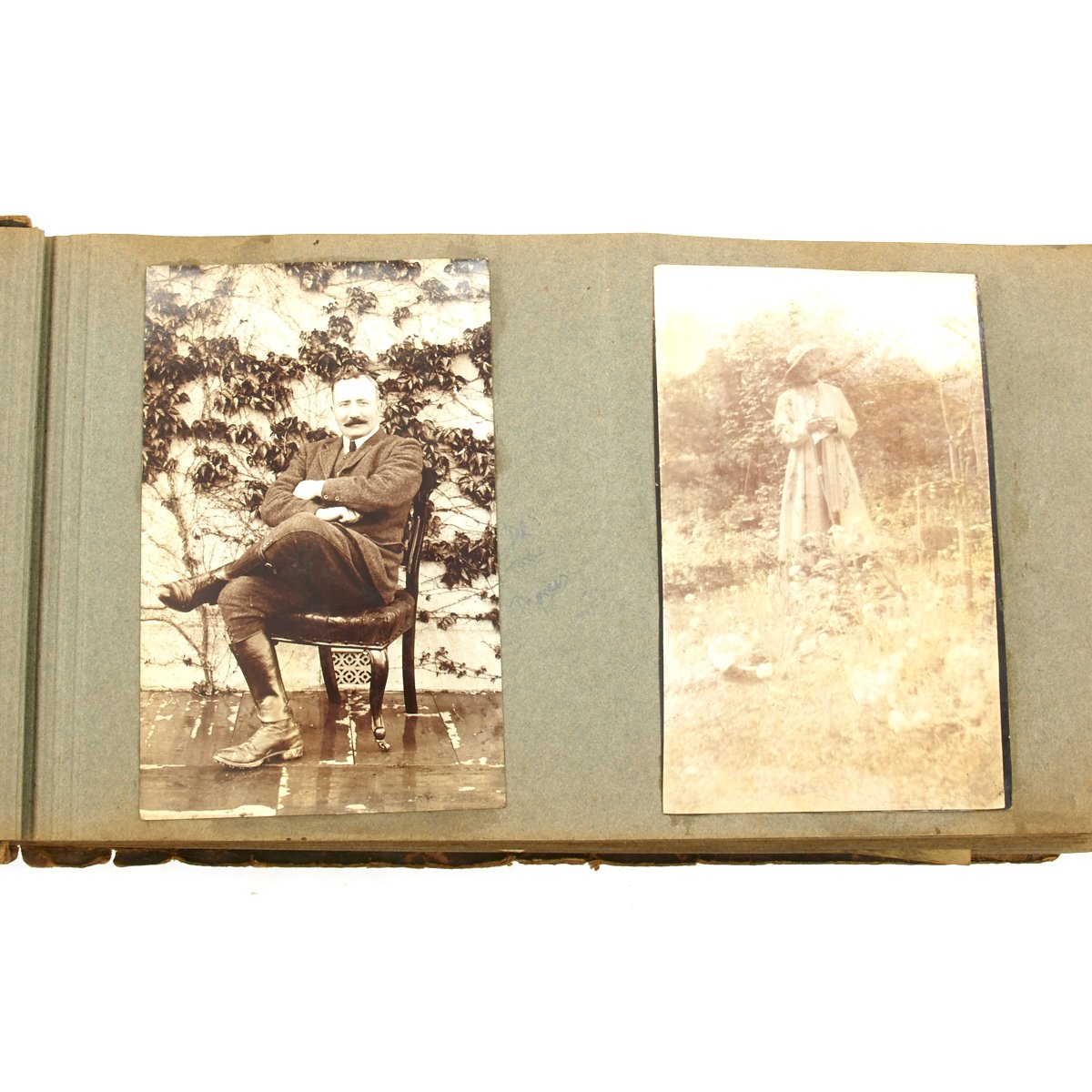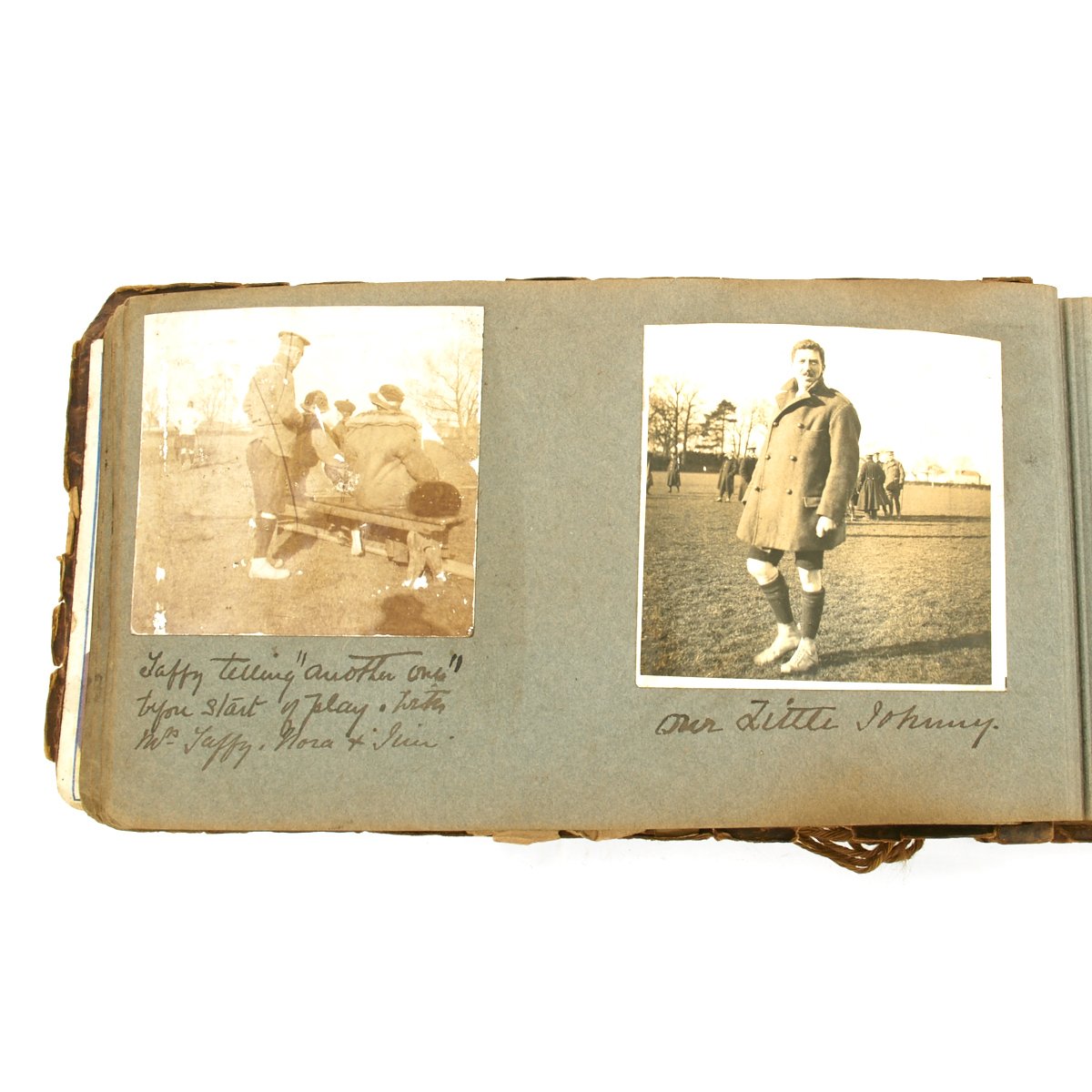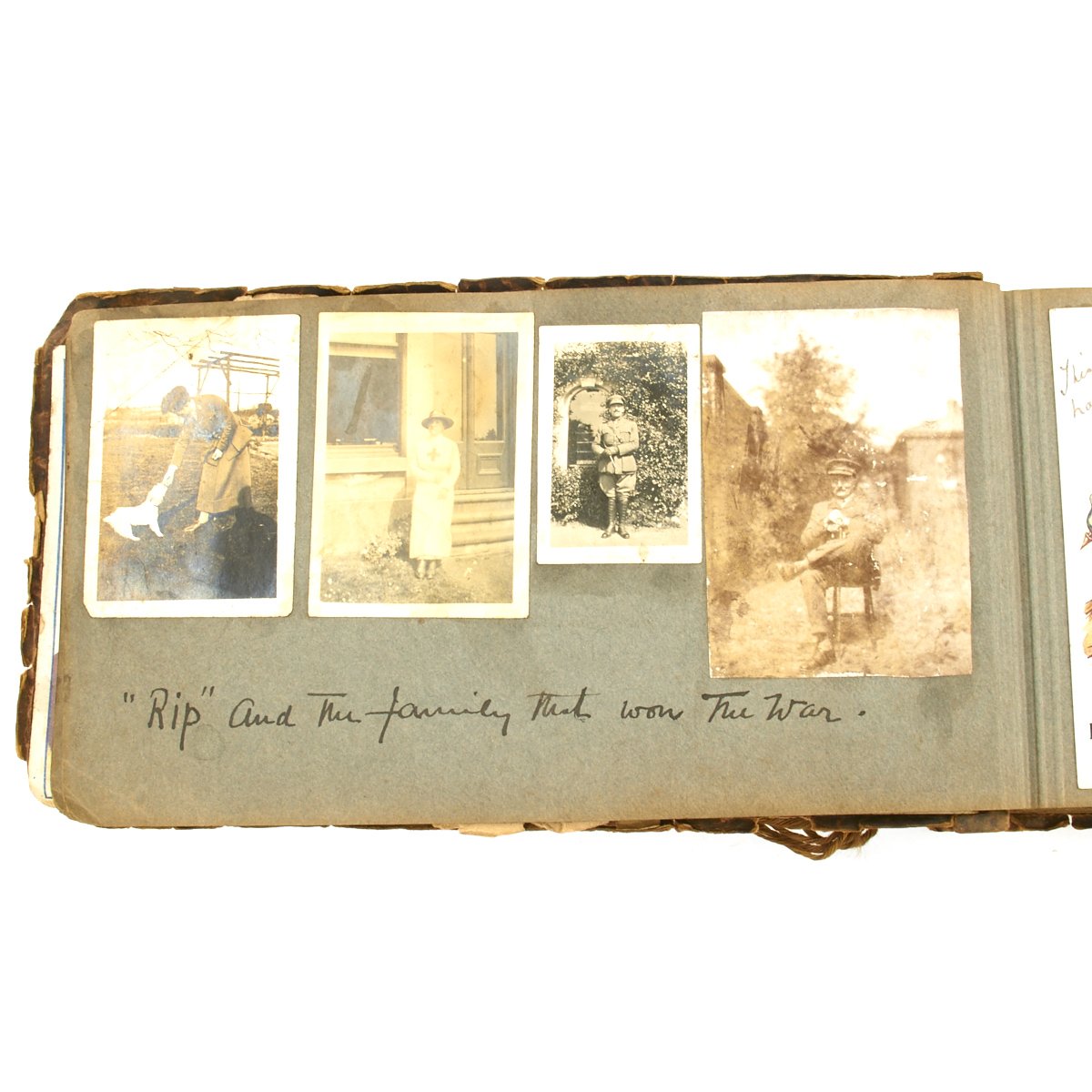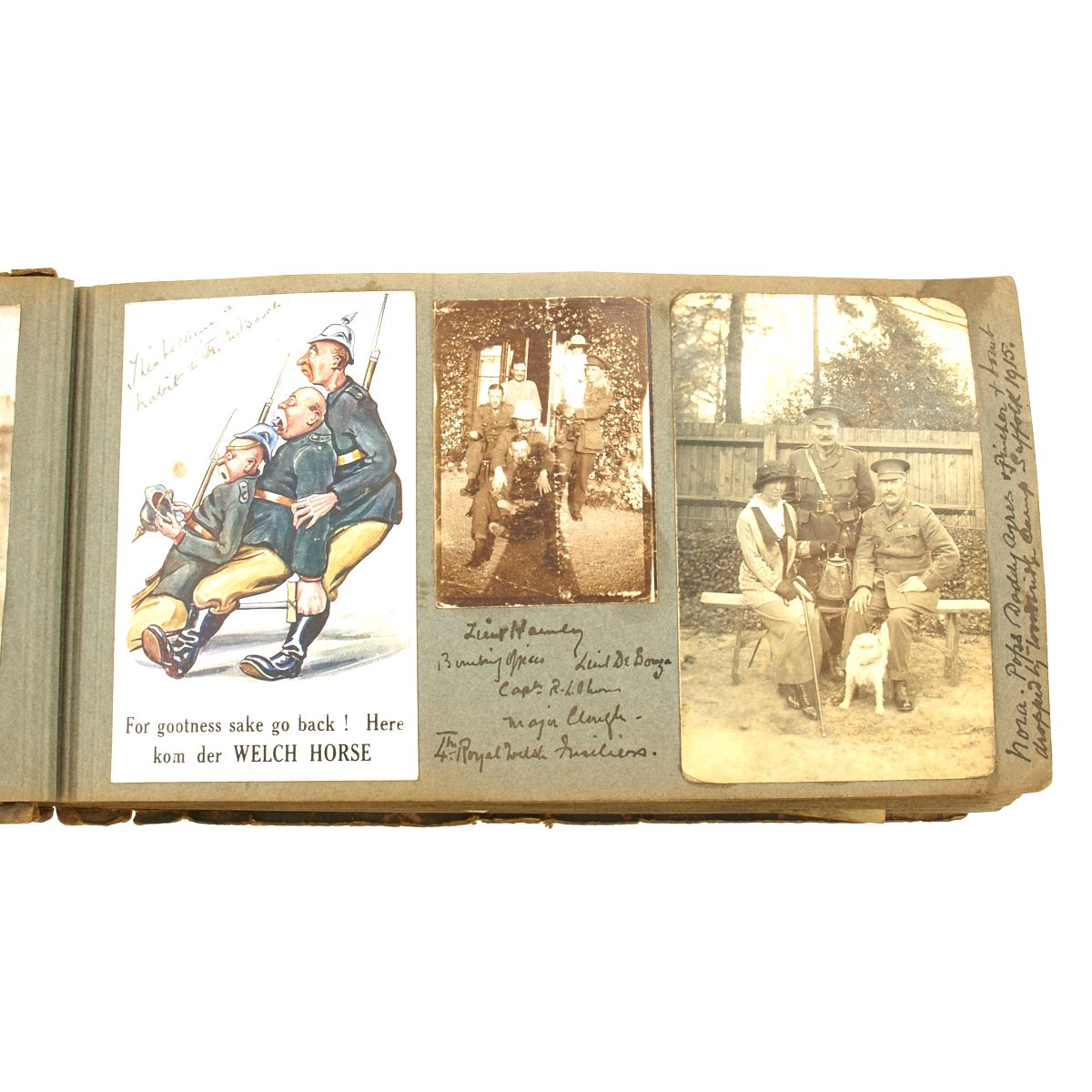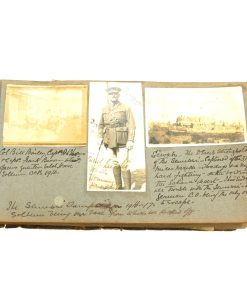Original British WWI Personal Annotated Photo Album of Doctor Capt. R.L. Thomas of the Welsh Horse Original Items
$ 995,00 $ 248,75
Original Item. One of a kind set. This is truly a remarkable WWI era photo album! It is one Officer’s personal history of his service in the Great War (WW1) serving as a Medical Officer with the WELSH HORSE Regiment. This regiment was officially called the Welsh Horse Yeomanry, and it was only in existence from 1914 to 1919 as part of the mobilization for WWI. Doctor Captain R. L. Thomas served as a medical officer in this unit, and collected this wonderful album.
The album contains countless one of a kind photographs, providing names, locations and numerous short stories in this fabulous collection. From leaving on the S.S. KASHGAR for the Dardenelles / Gallipoli Campain, to a posting in CAIRO and excursions all over the Middle east to locations such as Palestine and Jerusalem, this album shows it all. There are heaps of information including the typical WW1 era postcards and personal notes added by Dr. Thomas. There are also several letters, from both the war and post war period. The pictures and annotations continue up until 1921.
This album has TWENTY FOUR pages, 10 1/2 by 6 inches in size, and each is jammed packed with items of tremendous interest, making compelling reading for many many hours to the WW1 collector.
An opportunity not to be missed. Ready to add to your collection and display!
History of the Welsh Horse Yeomanry:
The Welsh Horse Yeomanry was raised on 18 August 1914 in South Wales by the Glamorganshire T.F. Association, with HQ at Sophia Gardens in Cardiff (since demolished). Later in the year, it was transferred to Montgomeryshire County T.F. Association, with HQ now at Newtown. The regiment was trained and equipped as lancers. Despite being the last yeomanry regiment to be raised, it was accorded precedence after the Glamorganshire Yeomanry due to its connection to the Glamorganshire T.F. Association at the time of its formation.
In accordance with the Territorial and Reserve Forces Act 1907 (7 Edw. 7, c.9) which brought the Territorial Force into being, the TF was intended to be a home defence force for service during wartime and members could not be compelled to serve outside the country. However, on the outbreak of war on 4 August 1914, many members volunteered for Imperial Service. Therefore, TF units were split in August and September 1914 into 1st Line (liable for overseas service) and 2nd Line (home service for those unable or unwilling to serve overseas) units. Later, a 3rd Line was formed to act as a reserve, providing trained replacements for the 1st and 2nd Line regiments.
The regiment saw service in the Gallipoli Campaign, before withdrawing to Egypt to reorganize in early 1916.. It then took part in the defenses of the Suez canal before taking part in the invasion of Palestine. It took part in the 2nd and 3rd Gattles of Gaza, and then was involved in the Capture of Jerusalem in December of 1917. In March 1918, the battalion participated in the Battle of Tel ‘Asur, but shortly afterwards was warned that it was to move to France, where reinforcements were urgently required to stem the German Spring Offensive.
n May 1918, the Division moved to France, and the battalion saw action on the Western Front. It took part in the Hundred Days Offensive including the Second Battle of the Somme (Second Battle of Bapaume) and the Battles of the Hindenburg Line (Battle of Épehy). In October and November 1918, it took part in the ‘Final Advance’ on Artois and Flanders. By the Armistice it was north of Ath, Belgium, still in 231st Brigade, 74th (Yeomanry) Division.
Fast Shipping with Professional Packaging
Thanks to our longstanding association with UPS FedEx DHL, and other major international carriers, we are able to provide a range of shipping options. Our warehouse staff is expertly trained and will wrap your products according to our exact and precise specifications. Prior to shipping, your goods will be thoroughly examined and securely secured. We ship to thousands clients each day across multiple countries. This shows how we're dedicated to be the largest retailer on the internet. Warehouses and distribution centres can be located throughout Europe as well as the USA.
Note: Orders with more than one item will be assigned a processing date depending on the item.
Before shipping before shipping, we'll conduct a thorough inspection of the items you have ordered. Today, the majority of orders will be delivered within 48 hours. The delivery time will be between 3-7 days.
Returns
The stock is dynamic and we cannot completely manage it because multiple stakeholders are involved, including our factory and warehouse. So the actual stock may alter at any time. It's possible that you may not receive your order once the order has been made.
Our policy is valid for a period of 30 days. If you don't receive the product within 30 days, we are not able to issue a refund or an exchange.
You can only return an item if it is unused and in the same state as the day you received it. You must have the item in its original packaging.
Related products
Uncategorized
Uncategorized
Uncategorized
Armoured Fighting Vehicles of the World: AFVs of World War One (Hardcover Book) New Made Items
Uncategorized
Band of Brothers ORIGINAL GERMAN WWII Le. F.H. 18 10.5cm ARTILLERY PIECE Original Items
Uncategorized
Uncategorized
Uncategorized
Uncategorized
Angolan Rebel 1970s era 60mm Inert Display Mortar from Angolan Civil War Original Items
Uncategorized
Uncategorized
Uncategorized
Armored Burgonet Helmet & Polearm from Scottish Castle Leith Hall Circa 1700 Original Items
Uncategorized
Uncategorized
Uncategorized
Uncategorized
Uncategorized
Uncategorized
Australian WWII Owen MK1 Machine Carbine SMG Custom Fabricated Replica with Sling Original Items
